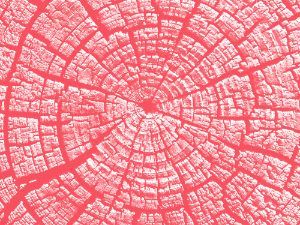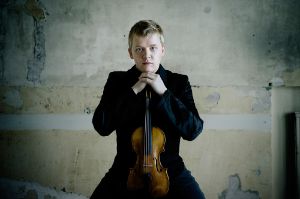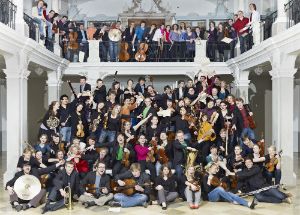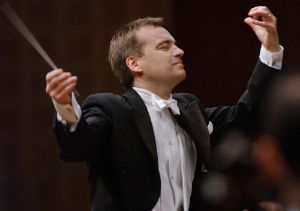Concert | Ligeti and Langgaard / Visiting orchestras / Violin soloists / Percussion
Junge Deutsche Philharmonie

Weathered growth rings of a tree felled around 1111, Aztec Ruins National Monument San Juan, New Mexico, USA 1978 © Wikimedia Commons
Edgard Varèse’s admiration for Beethoven has been documented in multiple ways. A photograph shows a Beethoven portrait on his desk. For him, Beethoven embodied the prototype of a modern composer. Beethoven was also the model for the title figure “Jean-Christophe” by Romain Rolland, who was a friend of Varèse’s. The author incorporated some of Varèse’s characteristics into his fictitious character. The world premiere of “Déserts” in 1954 in Paris under Hermann Scherchen was a scandal. The audience reacted with incomprehension to the audio tape recordings Varèse used to enrich his musical language. In Hamburg, however, where “Déserts” was performed in the same year under Bruno Maderna, the work met with great success. This time, Karlheinz Stockhausen modulated the audiotape interpolations. The fusion of exterior impulses and impressions with inner images are as applicable to Varèse’s Déserts piece as they are to Ligeti’s Concert for Violin and Orchestra. In Ligeti’s music, an amalgam of heterogeneous impressions – impressions of African music, geometry, untempered tuning systems – leads to new rhythmic constellations, harmonious colours and moulding processes.
Edgard Varèse [1883-1965]
Déserts
for 14 wind instruments, piano, percussion and 3 interpolations for “electronically organized sound” [1950-1954, rev. 1960/61]
György Ligeti [1923-2006]
Concerto for Violin and Orchestra [1990, rev. 1992]
Ludwig van Beethoven [1770-1827]
Symphony No. 3 in E flat major op. 55 “Eroica” [1802/03]
Pekka Kuusisto violin
Junge Deutsche Philharmonie
Jonathan Nott conductor
Paul Jeukendrup sound direction (E. Varèse)
A Berliner Festspiele / Musikfest Berlin event
With the support of the Aventis Foundation


